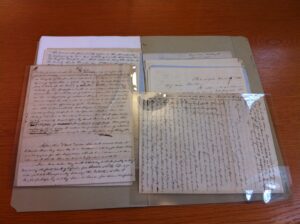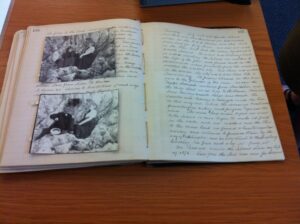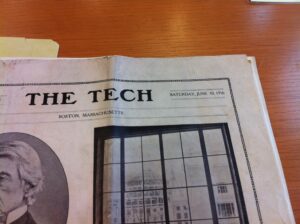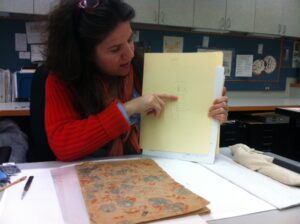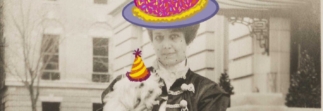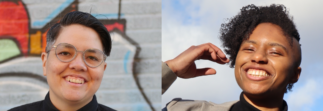Hello everyone!
It has been a few weeks since I had the pleasure of visiting the Institute Archives and Conservation Lab, but I’m excited to write this belated post. This week’s post is about how the MIT Libraries preserve MIT’s rich history and how old, sensitive materials are treated and conserved for library users.
Most students know that William Barton Rogers founded the Institute in 1861. The details of MIT’s founding and early years are much less widely known. The MIT Libraries however has a surprisingly in-depth collection of materials relevant to MIT’s history. This includes letters that William Barton Rogers wrote, old student newspapers, and photographs of students and buildings. With the help of Nora Murphy, Archivist for Reference, Outreach and Instruction, I got a glimpse of some of the fascinating pieces in the archives.
One of the earliest and, in my opinion, most meaningful pieces was the letter by William Barton Rogers describing his vision for a technical institute. The letter is from 1846 and outlines parts of the MIT mission that are still with us today (right).
Many of the other artifacts give insight into life at MIT in the past. For example, going through old photobooks reveals the presence of international students very early in the Institute’s history (19th century students from China are present in photobooks). There are also pictures of MIT living quarters in the 1930s. Surprisingly, they don’t look starkly different from where we live today.
Important works of MIT students and faculty are also preserved here. I had the opportunity to see a chlorine level map made by Ellen Swallow Richards in the 1880s. Richards was the first female student admitted into MIT and subsequently the first female instructor here. She is notable for her work in environmental chemistry and testing levels of various toxins in food and water. The MIT Archives has her work as well as some of her personal history. Richards appears in the journal of Louisa Hewins, which the Libraries has in their collection.
A few of the pieces that I saw were just plain fun. For example, the class of ’84 yearbook (1884 that is) has fantastic photos of student organizations. The fencing team is shown below. It also has rosters of fraternity members.
The Tech from June 10, 1910 featured pictures of the Institute buildings and the president of the time. It’s interesting to see what made students of the time take notice.
I went on to see the Wunsch Conservation Lab in the MIT Libraries. Jana Dambrogio, the conservator, gave me an inside look into the life of a book in need of restoration. Jana’s specialty in recent years has been around letter locking, a practice by which letters were sent without an envelope. The letters are folded in different ways that hide the contents of the letter without using more (scarce) paper. It was refreshing to hear about a passion outside science and engineering. Jana explained to me the fine line between restoration of an artifact to its old state and preservation of “imperfections” with historical meaning. I got the chance to see an old work that is currently undergoing analysis. Jana and her colleagues are looking into the structure of the book and drawing insights about how it was made.
I also met Kate Beattie who was doing a completely different kind of work preparing books for circulation to MIT users. It just goes to show the range of initiatives that the conservation lab engages in.
Thanks again to Jana Dambrogio and Nora Murphy for showing me around!
